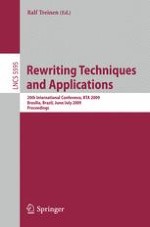2009 | Buch
Rewriting Techniques and Applications
20th International Conference, RTA 2009 Brasília, Brazil, June 29 - July 1, 2009 Proceedings
herausgegeben von: Ralf Treinen
Verlag: Springer Berlin Heidelberg
Buchreihe : Lecture Notes in Computer Science
